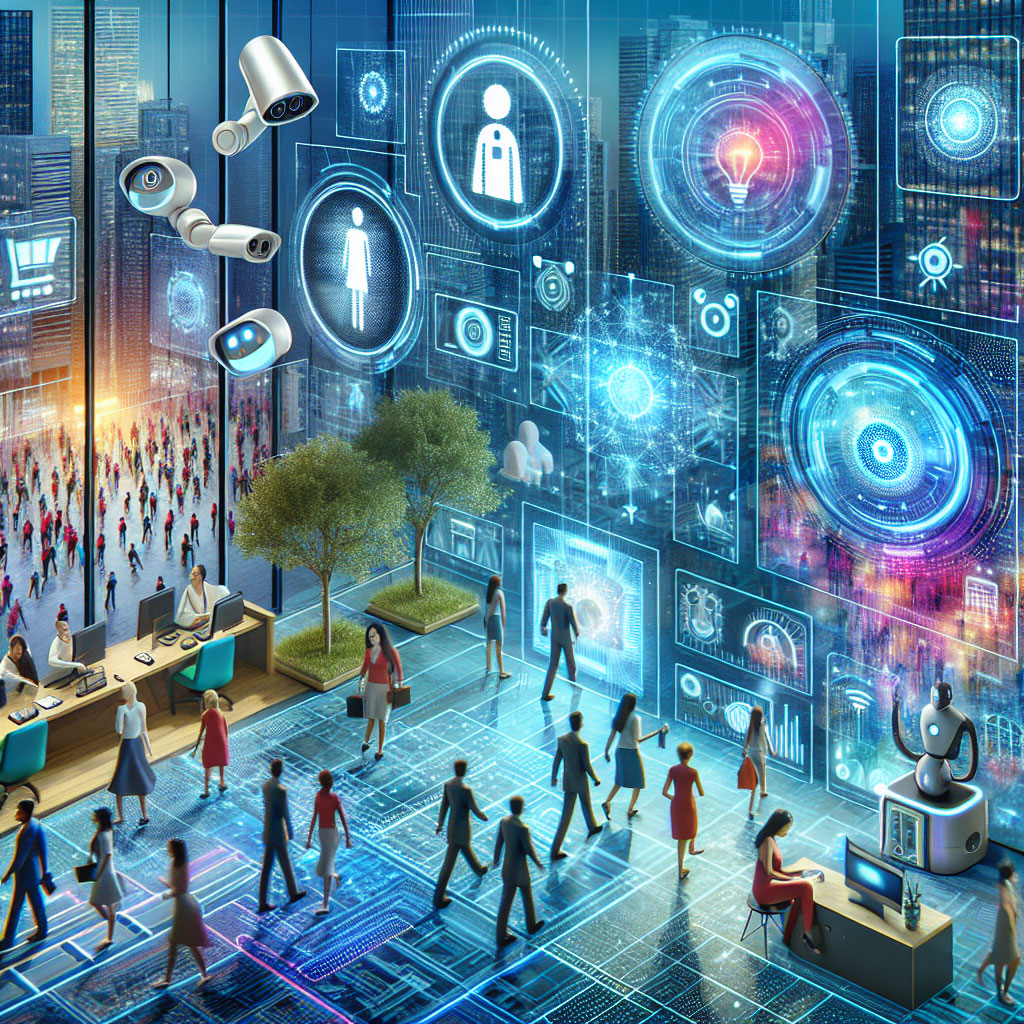
4 Most Used AI Trends of 2022

2022 has been a year of unrest, economic uncertainty, change and hope. The world witnessed the Russian invasion of Ukraine, surging inflation, the passing of beloved Queen Elizabeth II, and glimpses of normalcy as people engaged in activities for the first time since the start of the COVID-19 pandemic. It will certainly be a memorable year for many, including the artificial intelligence (AI) community. The tech community has made massive strides implementing innovative technologies across data-centric, model-centric, applications-centric and human-centric AI categories, helping organizations experience better efficiency, improved productivity, and lower costs. Let us reminisce on some of AI’s best moments of 2022.
We’ll uncover some of the best innovations in data, AI, and ML this year and how these technologies have helped pave the way for many organizations on their digital journeys this year. We’ll also highlight how Apexon leveraged its expertise in these areas to solve client problems and add value to their organizations.
1. Computer Vision (CV)
Computer vision, a field of AI, enables computers to gain an understanding and interpret information from digital images and videos. Computer vision opens the door for AI-powered machines, using cameras, algorithms, and data, to automate tasks normally performed by humans. The idea of using computer vision applications is not only essential, but practical for many businesses as they continue to automate processes. Computer vision continues to power AI applications used by businesses to strategically improve their decision-making and optimize their processes daily. This leads to significant improvements in various fields of business, in turn benefiting consumers and end users.
Apexon saw its clients struggling to analyze their visual data accurately and quickly for object identification, motion detection, image segmentation. VizSense, a proprietary computer vision platform, was developed to address these challenges.
VizSense is a visual analytics solution that applies advanced ML deep learning algorithms to provide an entire suite of functionalities for all your computer vision application needs – from live video feeds processing, real time sorting and access control to integrating pre-trained models, video-based intelligence extraction, and BI reports. VizSense provides an end-to-end capability to analyze all offline/online feeds at scale with custom analysis objectives.
2. Anomaly Detection
A common use case of machine learning is anomaly detection. Anomalies can include text errors or unexpected increases or decreases in activity. Being able to identify data points that deviate from normal data patterns is important and beneficial. By identifying outliers, organizations can help prevent fraud or even attacks on their network.
With the copious amounts of data organizations produce, machine learning for anomaly detection is vital. Manual processing for anomaly detection would be inefficient, time consuming and costly. Anomaly detection has enabled enterprises to better measure their business activity. Utilizing AI, they can, with a greater capacity, analyze data and uncover overlooked information. Application performance can drive workforce productivity and revenue or bring it to an abrupt halt. Product-based businesses, for instance, can easily realize the advantages of anomaly detection. The ability to detect quality issues faster helps to avert larger customer problems.
As for user experience, anomaly detection solutions are implemented to monitor systems and devices to be sure errors are addressed rapidly so that the experience is not interrupted.
Having first-hand expertise in using high-quality insights to drive strategic business decisions, Apexon understands how data anomalies can lead to errors or even missed opportunities, both of which can be costly. EdgeDetect proactively confronts these challenges.
EdgeDetect proactively scans, detects, and foresees patterns and data abnormalities that can have a far-reaching impact on your business and leverages advanced ML capabilities to provide you with insights that can help turn those anomalies into business opportunities. Organizations use EdgeDetect to spot unusual patterns and use that data to improve business processes, prevent fraud, improve CX, reduce customer churn, and increase ROI.
Apexon Case Study: CLAIM ERROR PREDICTION FOR A HEALTHCARE PAYER
3. Natural Language Processing (NLP)
Natural Language Processing is a branch of artificial intelligence as both it and ML serve as subsets of AI. NLP enables machines to understand human language whether spoken or written. Computer systems can then perform various tasks, including spell check and translation.
Integration with AI/ML only deepens with NLP applications. NLP allows for the automation of processes that involve the speaking, writing, and reading of languages.
Examples include:
- Chatbots
- Conversational Framework
- Spam Detection
- Cognitive Analytics
- Sentiment Analysis
Apexon realized the difficulties decision-makers faced trying to drive long-term strategy using disparate data. Enhancing the customer experience and driving a more customer-centric strategy was the thought process behind CXWatch.
CXWatch leverages advanced ML and data analytics tools to integrate data from all customer touchpoints to provide a comprehensive understanding of the customer experience. By closely monitoring the customer journey, CXWatch highlights key patterns and trends in CX metrics, helps determine the most crucial factors in customer satisfaction, and provides valuable suggestions to improve the customer experience at every touchpoint. These insights also help improve share of wallet, attract new customers, and boost marketing effectiveness.
CXWatch adds value at every stage of the customer’s journey with insights gained through analysis of data from multiple sources. Organizations can use these insights to increase customer satisfaction and respond quicker to customer service issues. AI, analytics, and human knowledge will continue to impact CX for the near future.
4. Forecasting
Data is essential to the process of forecasting. With it, organizations are better positioned to predict future developments across all areas including inventory, sales, and revenue.
There are two main categories of business forecasting: demand and growth. Demand forecasting focuses on resources, like inventory and staff, whereas growth forecasting focuses on models predicting future growth. AI-based forecasting provides organizations with improved accuracy. ML for business forecasting far outweighs the efficiency of manual methods as numerous metrics can be considered for prediction planning.
More companies are adopting AI-based forecasting as automation can be increased and the number of errors reduced. According to McKinsey, industries recognize different advantages. AI-driven forecasting in supply chain management can lead to error reduction between 20 and 50%, reducing lost sales and product unavailability up to 65%. Warehousing costs can be lowered 5 to 10 %, while administration costs can fall 25 to 40%. In other industries like healthcare, AI forecasting engines can lead to the automation of up to 50% of workforce-management tasks helping to improve hiring decisions and operations, while leading to cost reductions of 10-15%.
Apexon witnessed the challenges its clients had trying to improve their forecast accuracy and trend visibility for effective decision-making. IntelPredict, a learning tool, was developed to keep pace changing market dynamics and customer preferences
IntelPredict is a technology-agnostic framework that quickly forecasts trends in dynamic data sets, automates forecasting processes, and provides proactive monitoring of changing customer needs. It also provides the flexibility to accommodate a variety of real-world scenarios to improve demand forecasting capacity, while dramatically reducing manual intervention. A combination of a ML-based ensemble framework and time-series models deliver highly accurate results while consistently improving over time.
IntelPredict drives stronger decision-making with a continuously learning tool that delivers highly accurate forecasts and insights into the changing needs and preferences of the marketplace.
- Future of machine learning, data, and predictive analytics
- Industries can benefit from machine learning and advanced analytics. ML helps when data and predictive models need regular adjustments
- Machine learning provides a competitive advantage, developing machines that don’t rely on human sensing, description, intervention, or interaction to solve a new class of decisions
- ML applications can cost less to run than other types of advanced analytics
Building for the Future
Technology exists to solve business problems and streamline efforts. CV, anomaly detection, NLP and forecasting have fueled the progression of AI. Improved automation, increased error detection, greater customer satisfaction, and better business accuracy are only some of the benefits realized by organizations. The digital journey is an endless road as innovation is ongoing. We may be cruising past the sign that reads “2022”, but the road is wide open for organizations looking to further their digital journeys as the sign ahead reads, “Welcome to 2023”.
Apexon helps enterprises to take advantage of the data they collect by using advanced analytics, AI, and ML to increase operating efficiencies. Check out Apexon’s Data & Analytics services or get in touch with us directly using the form below.




